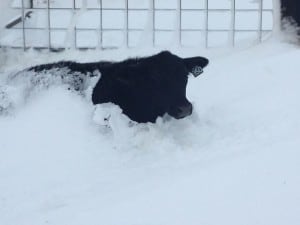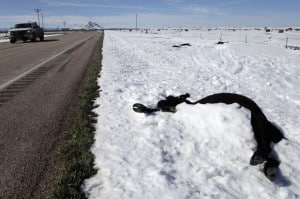This recent screen capture off my computer (click to read) illustrates this particular post: it shows one of my principal complaints (#1, below) with this blog and how it functions. Before I go any further, I’d like to make clear that the following complaints are personal opinions and involve things I think could be accomplished to make this a better forum for discussing ideas and airing differences. This post is 100% Guaranteed for the purpose of making this blog a better and more pleasant place to visit, and not at all intended as a platform for spleen venting or passive aggressive insinuations. This post is entirely intended to be a “what’s wrong with me, doctor?” type of query; with the hope that common ailments can be identified and cured for the betterment of us all.
As background, this post was based on a brief exchange between me and Greg Nagle on the Blog Etiquette post: https://forestpolicypub.com/2013/10/21/fyi-some-more-thoughts-on-blogging-etiquette-for-this-blog/
The screen capture for the left side of this blog shows entries by regular commenters, Sharon, Matthew, and Gil, and it is in a format a lot of us liked and commented on when the “theme” (?) was being selected and refined. It is the right hand column that I have my worst problems with both the old and new blog formats:
#1. Categories and Tags. What is this stuff? These are two users of space I don’t get. Plus, I think there are other categories that can be removed as well, or else relegated to another page that can be readily linked. I liked some of the old “widgets” (?) that were kind of useful and interesting in the old format, such as “most popular” posts, one, and one or two others that seemed similar.
#2. If I scroll up the right hand column I come to my second complaint on the Homepage: you know the last 50 people who have had something to say (and why not optional links for the past 100, 500 and/or the past 1,000 and maybe even “All”?) — you just don’t know what they are talking about. The Book Review Blog shows the name of the post for each person who is commenting — allowing for great editing of personally uninteresting topics and/or for following specific discussions — and the old blog did, too. We need to get this fixed. Maybe one of us could join a WordPress discussion group and report back to the rest of us how to fix these kinds of problems? Then we could fix it.
#3 Statistics. The old blog had a great set of statistical analyses and graphs to show who was using the blog, how many, by the day-week-month-year-ALL, and what they were paying most attention to at a time — going all the way back to Sharon’s first posts and comments, sometime in the late ’60’s or early ’70’s. The new blog does not. It has one crappy little graph of dubious value covering a short period of time. We are pretty sure we have saved all of the blog back to post #1 and comment #1, but pictures are certainly missing from some of them, and it is definitely hard to find older posts and comments with any ease. If these graphs and tables are only “widgets,” so near as I can tell we should only have to mark them off a list to make them reappear. I hope.
#4 Commenter Access to Statistics. Usually it is Matthew, Larry, or I who will sometimes say something like “wow, we just passed 10,000 published comments”, or “just set a new record of 900-whatever “views” today.” (For the record, we’ve been over 700 views — which is about 2- to 3-times larger number than actual visitors — about 3 or 4 times. We have been averaging 300-450 views a day for the past year or so during weekdays, and about 150-250 a day on weekends, and we have more than 275 regular subscribers). There are about five or six active co-moderators on this blog, with Sharon in the lead, and we can all see whatever stats are available — but nobody else can. I think these statistics should be available to all posters and commenters, if they are interested — or at least those who reasonably identify themselves if they are using a pseudonym for some reason.
#5 The Search Engine. Regular readers of this blog may have noticed a few days ago when I asked Matt for help to find a prolonged and sometimes heated and/or snarky discussion we had on a specific topic (Montana’s Principles, I think). Matt and I occasionally bump heads pretty hard, so it is a somewhat humbling act, at least for me, to publicly ask for his help. I’m guessing he has had as much trouble finding the post as I did (assuming he’s had a chance to read my comment yet) — and we wrote most of the discussion ourselves and both have access to the slightly-better co-moderator search methods. This is like 1990s Google. WordPress should be able to at least do that good.
So that’s my Top 5 Beefs, numbered accordingly. Anyone else agree with me on these, disagree, or knows Something Important that I’ve missed, please Comment. New whines will be permanently numbered in the order they are 1) received and 2) succinctly stated (one brief paragraph maximum; phrase or short sentence preferred). Then we’ll try and get some of them fixed. I will not be personally involved in any technical work in these regards, but I’m hoping that someone of the general readership has — and is willing to donate — these capabilities.
Other thoughts?



